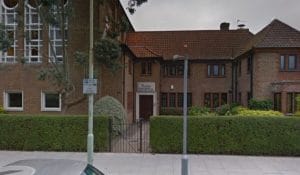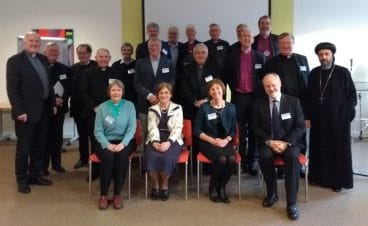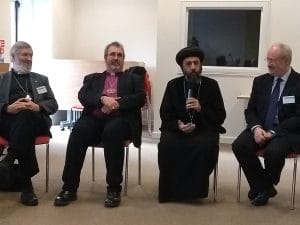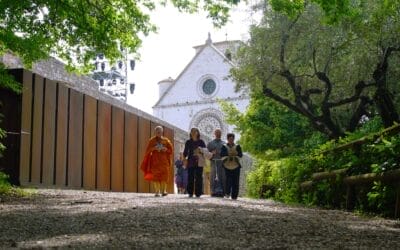
Welwyn Garden City
 Povilus explained how, during that period, “a new and vast horizon opened up an unimaginable vision of Mary” for the founder of the Focolare Movement. She was discovered “almost as if for the first time” as a human being, “one of us”, but at the same time “imbued with the Word of God.” “Mary revealed herself as the Mother of God, Theotokos, Mary was not just, as we had thought, the young girl of Nazareth, the most beautiful creature in the world, whose love surpasses the love of all the mothers in the world. She was the Mother of God in a dimension that was completely new to us. To explain it, Chiara used an image, that of the sky enveloping the sun.” “It was a new intuition of the significance of the event that took place at the foot of the cross, of the sword that must have passed through Mary’s heart, being asked to renounce her maternity towards her divine son to take as a substitute child John. And yet Jesus in his death was giving his life to all humankind, making us all God’s children. As Mary’s role in the Annunciation was to say “yes” to something beyond herself that God was bringing about, here again, on Golgotha, what was asked of her was, as theologians have said, a “second yes.” There is a wealth of implications for our own lives that Chiara derived from this understanding of Mary Desolate. First and foremost is that of recognising Mary to be a model that can be imitated: “by loving one another we generate the presence of Jesus in our midst. Like Mary, we can offer Christ to the world spiritually.”
Povilus explained how, during that period, “a new and vast horizon opened up an unimaginable vision of Mary” for the founder of the Focolare Movement. She was discovered “almost as if for the first time” as a human being, “one of us”, but at the same time “imbued with the Word of God.” “Mary revealed herself as the Mother of God, Theotokos, Mary was not just, as we had thought, the young girl of Nazareth, the most beautiful creature in the world, whose love surpasses the love of all the mothers in the world. She was the Mother of God in a dimension that was completely new to us. To explain it, Chiara used an image, that of the sky enveloping the sun.” “It was a new intuition of the significance of the event that took place at the foot of the cross, of the sword that must have passed through Mary’s heart, being asked to renounce her maternity towards her divine son to take as a substitute child John. And yet Jesus in his death was giving his life to all humankind, making us all God’s children. As Mary’s role in the Annunciation was to say “yes” to something beyond herself that God was bringing about, here again, on Golgotha, what was asked of her was, as theologians have said, a “second yes.” There is a wealth of implications for our own lives that Chiara derived from this understanding of Mary Desolate. First and foremost is that of recognising Mary to be a model that can be imitated: “by loving one another we generate the presence of Jesus in our midst. Like Mary, we can offer Christ to the world spiritually.”  Another point that comes to new light in Chiara’s mystical experience of 1949 has to do with Mary’s place in the Church. “We know from the Acts of the Apostles that she was present at Pentecost which is often marked out as the birth of the Church. Chiara, describing her intuition of Mary’s place in the Church, from that early moment of the descent of the Spirit, used the metaphor of her being a heart: If Christ is the head of his mystical body, the Church, Mary is at its heart. Mary plays an essential role in helping the Church to respond fully to God’s project for it, which is to be a presence of Christ.” Great interest was shown in this Spirituality of Communion of Chiara Lubich’s, which aims “to increase the typical contribution of vitality, beauty and holiness that the Church, following Mary’s example, is called to bring to the world.”
Another point that comes to new light in Chiara’s mystical experience of 1949 has to do with Mary’s place in the Church. “We know from the Acts of the Apostles that she was present at Pentecost which is often marked out as the birth of the Church. Chiara, describing her intuition of Mary’s place in the Church, from that early moment of the descent of the Spirit, used the metaphor of her being a heart: If Christ is the head of his mystical body, the Church, Mary is at its heart. Mary plays an essential role in helping the Church to respond fully to God’s project for it, which is to be a presence of Christ.” Great interest was shown in this Spirituality of Communion of Chiara Lubich’s, which aims “to increase the typical contribution of vitality, beauty and holiness that the Church, following Mary’s example, is called to bring to the world.”




0 Comments